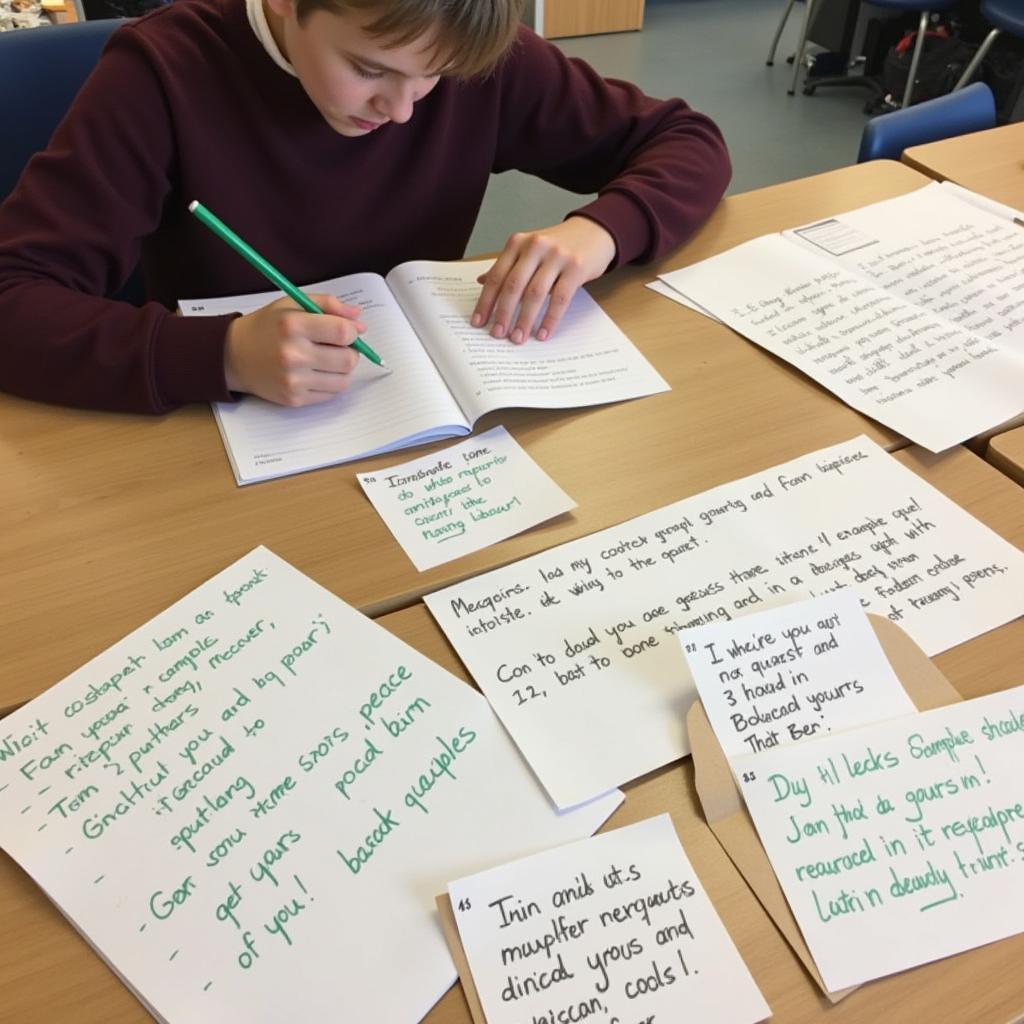Writing a high-scoring IELTS Task 2 essay requires more than just good English – it demands the strategic use of relevant examples to support your arguments. Learn how to write better IELTS writing task 2 essays by following this comprehensive guide.
Understanding the Importance of Examples
Clear examples serve multiple purposes in your essay:
- Demonstrate your understanding of the topic
- Support your main arguments
- Make your writing more engaging
- Show the examiner your ability to explain complex ideas
- Help achieve coherence and cohesion

Types of Examples to Use
Personal Experience
Personal examples can be powerful when relevant to the topic. For instance, when discussing education, you might say:
“Having studied in both traditional and modern classroom settings, I’ve experienced firsthand how technology can enhance learning outcomes. In my final year of university, using educational apps improved my test scores by 15%.”
Statistical Data
Numbers and research findings add credibility to your arguments. For example:
“Recent studies show that 75% of companies now offer remote working options, leading to a 20% increase in employee satisfaction and productivity.”
Using specific examples in task 2 can significantly improve your score by making your arguments more convincing.
Historical Events
Historical examples demonstrate broad knowledge and understanding:
“The Industrial Revolution clearly demonstrates how technological advancement can transform society, similar to how artificial intelligence is reshaping our world today.”
Structuring Your Examples
How to organize task 2 arguments effectively is crucial for maximum impact. Follow these steps:
- Introduce your example briefly
- Explain its relevance
- Connect it to your argument
- Draw a clear conclusion
Common Mistakes to Avoid
- Using irrelevant examples
- Providing too many details
- Failing to connect examples to arguments
- Using only personal experiences
- Including unbelievable or extreme examples
Expert Tips for Using Examples
Dr. Sarah Thompson, IELTS examiner with 15 years of experience, suggests:
“The best examples are specific enough to be credible but brief enough to maintain focus on your main argument. Aim for a balance between personal and general examples.”
Top phrases for IELTS Writing Task 2? can help you introduce and develop your examples more effectively.
Sample Paragraph Structure
Here’s an effective way to incorporate examples:
Topic sentence → General explanation → Specific example → Analysis → Link back to argument
“Social media has revolutionized modern communication. While platforms like Facebook and Twitter have made global connectivity instant, they’ve also created new challenges. For instance, a 2022 study found that teenagers who spend more than four hours daily on social media are 70% more likely to experience anxiety and depression. This demonstrates how technological advancement can have unintended negative consequences on mental health.”
Conclusion
Mastering the art of using clear examples in IELTS Task 2 essays is essential for achieving a high score. Remember to keep your examples relevant, concise, and well-connected to your arguments. Practice incorporating different types of examples and always ensure they strengthen rather than distract from your main points.
Frequently Asked Questions
-
How many examples should I use in my essay?
Use 1-2 examples per main body paragraph. Quality matters more than quantity. -
Should I make up statistics?
No, use general terms like “approximately” or “around” if you’re unsure of exact numbers. -
Can I use personal examples in every paragraph?
It’s better to vary your example types to demonstrate broader knowledge. -
How long should each example be?
Keep examples to 2-3 sentences maximum to maintain focus on your argument. -
What if I can’t think of a relevant example?
Focus on common experiences or general observations that most people can relate to.